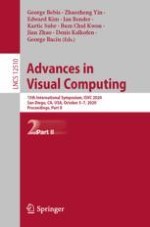2020 | OriginalPaper | Buchkapitel
Interpreting Galaxy Deblender GAN from the Discriminator’s Perspective
verfasst von : Heyi Li, Yuewei Lin, Klaus Mueller, Wei Xu
Erschienen in: Advances in Visual Computing
Aktivieren Sie unsere intelligente Suche, um passende Fachinhalte oder Patente zu finden.
Wählen Sie Textabschnitte aus um mit Künstlicher Intelligenz passenden Patente zu finden. powered by
Markieren Sie Textabschnitte, um KI-gestützt weitere passende Inhalte zu finden. powered by
